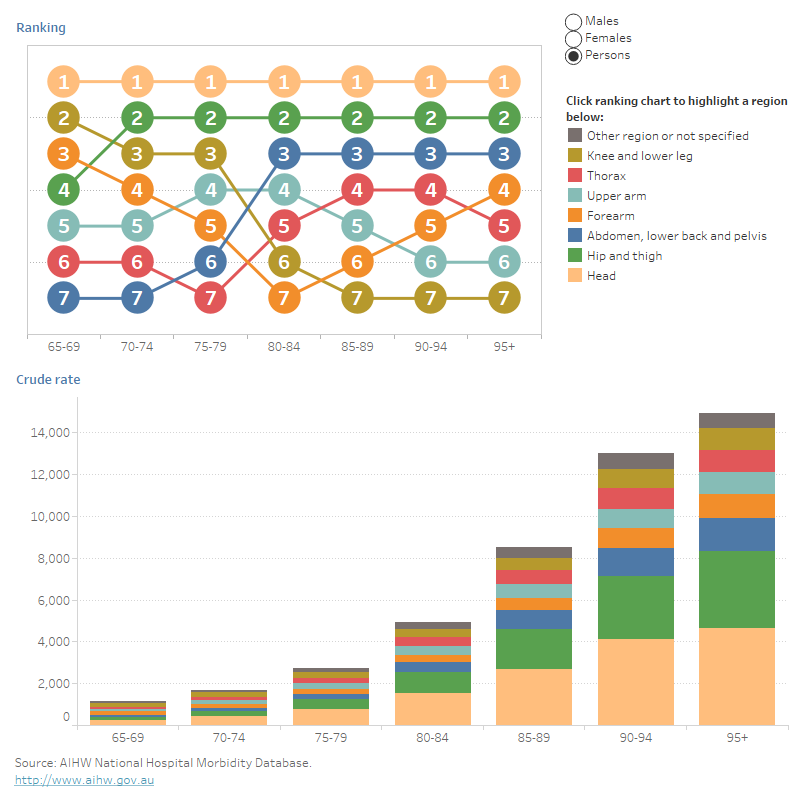What body part was injured?
The head (29%) and hip and thigh (20%) were the most common areas of the body injured among older people hospitalised due to falls (Figure 11). In part, this may reflect the inherently serious nature of some injuries, for example, head and neck injuries.
For all body regions, the rate increases with age, this is true when comparing younger and older Australians and age groups within the population aged 65 and over (Figure 12).
Figure 11: Hospitalised falls by principal body part injured, 65 years and over, 2019–20
Notes
- Percentages may not sum to 100 due to rounding.
- Injuries to other body regions or information was not provided for 1,225 cases (0.9%)
Source: AIHW National Hospital Morbidity Database.
For more detailed data, see Data tables A24–25.
Notable difference between the sexes for injured body parts were (Figure 12):
- males had a higher proportion of head and thoracic injuries than females (33% and 11% compared to 26% and 6.8% between sexes respectively)
- females had a higher proportion of forearm and hip and thigh injuries than males (11% and 21% compared to 6.2% and 18% between sexes respectively)
For all body regions, hospitalisation rates were higher in older adults than younger adults; however, there were some key differences in the injury location by age:
- people aged 65 and over were 28 times as likely to be hospitalised for a hip or thigh injury due to a fall than those aged 15–64
- people aged 65 and over were 11 times as likely to be hospitalised for a thorax injury due to a fall than those aged 15–64.
Figure 12: Crude rates of hospitalised falls by selected body region injured, age group and sex, 2019–20
Rank graph showing that injuries to the head were the top ranked body location injured across all age groups. Stacked column graph showing the rate of each body location injured increased across each age group.

For more detailed data, see Data tables A24–25.


